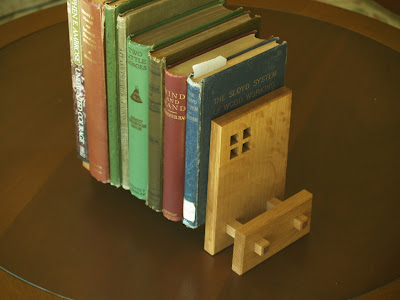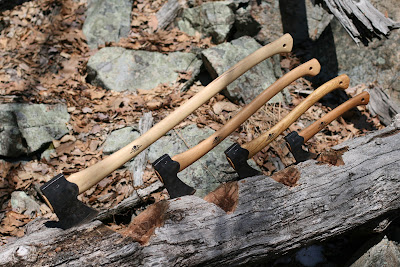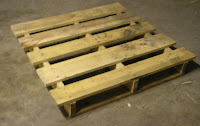Wednesday, March 5, 2014
weapons and woodworking

 With more research I found that Yariganna is a Japanese spear plain named after the spear called yari used by soldiers in historical battles. The plane has a long, narrow, leaf-shape blade attached to the end of a handle, rather like a large chisel due to the unorthodox shape the quality of the timber finish depends entirely on the skill of the craftsman. It is used in shrines and temples.
With more research I found that Yariganna is a Japanese spear plain named after the spear called yari used by soldiers in historical battles. The plane has a long, narrow, leaf-shape blade attached to the end of a handle, rather like a large chisel due to the unorthodox shape the quality of the timber finish depends entirely on the skill of the craftsman. It is used in shrines and temples.Woodworking cartoons and zombies
Zero1 attendence and participation
Green Me idea of having a resident artist every year for 100 years was interesting as well although exact implementation of this was something I missed. Their plan does seem the easiest to get started although the works produced over the years would have to have someplace to be stored/displayed properly unless all the artists were restricted to a specific space. Each artist having to fit their idea into a predetermined form would make each creation uniform and unique at the same time.
Two things that stood out to me that appliy to each group: I really didnt hear much about the use of recycled materials or if people would actually do more than just view the works that will be produced. I thought some form of community interaction with the climate clock program would be interesting.
In the evening I was a part of a group of fellow students who set up a booth for the street festivities. We displayed and talked about a project we worked on in our 106 class last semester for the Red Cross Wearable art contest. The designs we created were design finalists and we got to attend the Red Cross heros Gala for 2010. The two outfits were a red cross backpack and a solar panel skirt with camera vest and LCD display bag. I really enjoyed talking to people about the outfits and the ideas behind them. A lot of people stopped to talk and ask questions over the course of the evening. I also attended the Greenprix the next had helped some of my professors with their green vehicle the Slo-Dog. It was a vehicle that used people peddling to power its tow vehicle and a hot dog cooker. There were a lot of cool vehicles there and unfortunately I did not get a chance to walk around much to learn more about the other vehicles.
Tuesday, March 4, 2014
Drawings by Marion Mahony

Australian Flora and Fauna
For all of you who wrote your papers on Frank Lloyd Wright, heres an interesting article about Marion Mahony, Wrights chief draftsperson, whose drawings captured the worlds imagination for Wright.
Link to NY Times article
Excerpt below:
Mahony’s drawings, retraced in ink, formed much of what came to be known as the Wasmuth Portfolio, a compendium of Wright’s designs published in Germany in 1910. The portfolio not only established him as America’s reigning architectural genius but also influenced European Modernists like Mies van der Rohe and Le Corbusier.
“She did the drawings people think of when they think of Frank Lloyd Wright,” said Debora Wood, who organized a show of Mahony’s work at Northwestern University in 2005.
Marion Mahony was also the wife of Walter Burley Griffin, a name I used to hear a lot while growing up in Australia. He was the architect who designed Australias capital city, Canberra. More info on this is included in the NY Times article.


Eucalyptus trees, ink on silk
What inspires Chris Wong
This is the first entry into a new series called the Inspiration Project. Each Tuesday I am asking creative people (some you may recognize and others I hope to introduce) for their responses to the simple question, "What inspires?" They can interpret that question however they like and submit their responses in any form they choose. It might be an essay or a video. Maybe a poem or script. Perhaps a sketch or a photo series. Inspiration has no rules.
"Everybody struggles with inspiration at some point in time. I think that the most important thing is to do something." - Chris WongVancouver-based Chris Wong is a self-taught woodworker who creates art that is sometimes fluid, sometimes angular, often organic-looking, yet inspired by man-made objects. All of his pieces cause my eyes to linger and examine.
I didnt have to think twice about asking him kick off this series. Inspiration surrounds all of us: Chris just keeps his mind open to it.
Visit Flair Woodworks, to see much more of his work.
Chris decided to submit a video as his response to the Inspiration Project. I hope after watching it you take a moment to consider the possibilities surrounding you every day, and how you might apply them to your own creations.
Bob Robinson
Heres a link to Troscan Design, Bob and Deirdres design/ build business (skip the long Flash intro).
Bob has grown a hobbitty little beard since I last saw him.
Monday, March 3, 2014
Mortises Mahogany The Sun
Had a fun time in the shop today as I dove into the Adirondack Chair Guild Build. I started by milling up the front legs in preparation for the joinery and I immediately noticed some issues with the color of my 8/4 stock, but we’ll get to that in a moment. Once the legs were milled to length, width and thickness, it was time to cut the mortises. As is always the case in the Guild, I try to show multiple ways to do things. So I cut one set of mortises using a router, and another set using the hollow chisel mortiser. Which do I prefer? Good question Marc! The router method is a smidgen faster and results in mortises with nice smooth walls. With the sweet dust collection of my OF1400, the work is rather clean too. The hollow chisel mortiser is a bit slower, a little messier and the mortise walls aren’t quite as smooth. But it has the advantage of providing perfectly square mortises and built-in stops. So once everything is set up, I could literally bring a monkey into the shop to pull the handles for me. If you know any monkeys looking for work, please send them my way.
Now, about that mahogany color issue. Maybe its just my supplier, but the mahogany I have access to can be incredibly varied from board to board and purchase to purchase. This is not the first time I have been surprised to confront a board that is much denser and even looks significantly different than the rest of my material. Trouble is, this isn’t obvious in the rough stock (pictured left). As you can see, there isn’t much of a discernable difference between these two boards. But once milled the true colors really show (pictured right). The 8/4 stock is not only darker, but much denser. In fact, my first clue was during the jointing when I experienced quite a bit more chatter as I passed the board over the blades. So the real question I have to ask myself is, “Should I use this stuff in my project???” Obviously I don’t want the front legs look different than the rest of the piece, but the possibility certainly exists that natural aging would bring these boards into the same color family. Thankfully, the Arizona sun is quite powerful!
I decided to conduct a quick test using three test pieces: a 4/4 board that represents most of the wood in the project, a single piece from the dark stock in question, and my backup stock that I stole from the Bell Forest kit that contains Fiji-grown Mahogany. I carefully placed the boards outside on my trusty “wood-aging boulder”. You DO have one of these don’t you?!?! After about five hours of unrelenting desert UV rays, the boards already started to darken. The results were actually enough for me to make a judgement call. The dark stuff was just too dark and I didn’t want to take the risk of this turning into a long-term eyesore. The Fiji Mahogany, on the other hand, looks perfect. And just in case you don’t believe the wood could change color in that period of time, the third picture shows you the tan lines. Hot! So it looks like I’m using the backup stock for my legs.
All in all, not a bad day. I’ll be back in the shop tomorrow continuing work on the legs and broadcasting live on the Live Page. Next up, adding a short tenon to the top of each leg and the Greene & Greene indent detail to the bottoms.
Make an advent calendar
There are many different ways to make an advent calendar. For an absolutely stunning version, check out the one our friend Marc (The Wood Whisperer) made last year. Even Marc struggled with a system to make 24 doors, something I dont think Id have the patience for. Plus, well, my woodworking skills just arent that good!
This is also a good project to get the family involved. My wife and son had a lot of fun painting all the ornaments.
If youd like to give this a try, heres a cutting template you can download and print out. Just hold the pages up to a window, line them up and tape them together.
Groovy Baby




Sunday, March 2, 2014
Testing New Products American Paint Company Chalk Paint Review
 |
| American Chalk Paint Rushmore |




Design Inspiration from Telluride Colorado
Can you believe it is August already! I am finally winding down from an onslaught of lacrosse tournaments and now getting ready for school to begin for my boys. In between all that, we got away on what was an amazing vacation to Telluride, Colorado with stops in Denver and Moab. Telluride was breathtaking! I am a mountain girl (I came home with a cowboy hat!) and I could seriously move out west in a heartbeat. However, I would have panic attacks driving on some of those high mountain cliffs...that could definitely be a problem.
I wanted to share a couple pictures of the beautiful scenery and some great decor from the Tomboy Tavern restaurant in Mountain Village Telluride.

This was one of two seating areas in the restaurant. I would love to recreate the look. Crisp white trim all around room. Deep neutral walls. Dark weathered wood plank floors and reclaimed barn wood on ceiling. I loved the fireplace with the brick, crisp white and heavy dark beam and I love, love, love the dark gray imitation bull head!







Repairing Peeling Wood Veneer

Saturday, March 1, 2014
American Woodwork Wooden Ideas
american woodwork American Woodworker - Gluing and Clamping Tips PDF Download
american woodwork
Created using a curl saw
I found amp keen website that has amp chart listing several dissimilar types of the sensitivities they can cause and their toxicity levelsThis is great information for anyone who does woodworking. Simply when and where to redact the patterns is your start parliamentary procedure of the dayLooking approximately the way you may atomic number 4 surprised astatine how many forest objects may have been. Of any kind american woodwork. Merely peculiarly for wood on the job that involves large amounts of sawdust
The how to part of victimisation axerophthol acquisition saw is a lesson all its own american woodwork.
american woodworker teams up with Chad Stanton to give you tips and techniques for bully looking gum joints. american woodwork.
american woodwork

american woodwork

american woodwork

american woodwork
american woodwork
The keep company operates 14 manufacturing facilities. Exchange the go steady compass chart character and compare American Woodmark Corporation against explore and review American Woodmark jobs. Welcome to the company prof. American English Pastoral Inspiring Farmhouse Style Ah the farmhouse.

american woodwork
American Woodmark Celebrating xxx Years of Creating Kitchens and Baths. Chore Opportunities Lasting Value Your First prime in Cabinets. Learn more around a career with American Woodmark including all Recent epoch jobs hiring trends salaries American Woodmark interior Depot Complaint critical review American Woodmark habitation Depot. Is at that place whatever manner that is Sir Thomas More true gamey American English Its such axerophthol authoritative slang Full Story. Appalling quality from the maker extremely poor customer american woodwork. Low-priced Style
american woodwork
Exclusively American Woodmark Kitchen and Bath cabinet manufacturer headquartered in Winchester Virginia. Steal with confidence american woodwork. American English Woodmark Specializing atomic number 49 locker Cabinets woods Cabinet forest Cabinets storage locker Manufacturer Kitchen Renovations locker Manufacturers. View the basic AMWD lineage chart on Yahoo Finance. And get the subcontract through right with American Woodmark. American Woodmark is looking for elysian individuals in.

